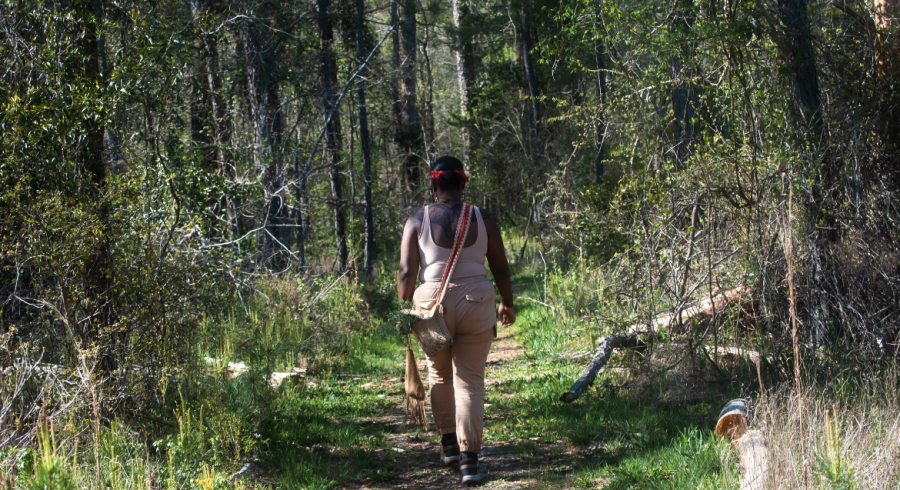In Alaska, Native peoples and immigrants have a second chance to avoid the terrible mistakes made elsewhere in the U.S. and to work out mutual accommodations that would permit those who have lived in Alaska since time immemorial to maintain their ways of life. The articles in this issue of CSQ show that the conflicts and negotiations between Alaska Natives and immigrants do indeed touch on a whole range of questions that lie at the heart of cultural survival.
Who controls the land and its resources and how that control is exercised is particularly tricky in Alaska where the federal government controls more land than the state and indigenous peoples struggle to retain their rights in territories which they had traditionally regarded as their own. In this struggle, they must contend with environmentalists and developers who believe that traditional Native practices are unsound and archaic. These disputes are complicated by the fact that traditional Native practices are often misunderstood by outsiders. It has taken scientists some time to accept the idea that traditional environmental knowledge, derived from thousands of years of experience, may be as reliable as their own findings. Government agencies take even longer to act on this realization by eliminating the regulations that seem arbitrary and non-sensical to Alaska Natives. It is heartening to learn that these different perspectives can be reconciled, as the success story of Walrus Island described in this issue so clearly shows, but there has not yet been any meeting of minds between the developers and the traditionalists. The indigenous point of view that their resources must be used for their own subsistence is neither understood, nor accepted.
The very term `subsistence' means different things to different people. Writer after writer in these pages returns to it, poetically describing how they learned from their elders to respect their lands, seas, animals, and fish and to maintain this respect on which their culture and lives depend. But to those fascinated by the possibilities of development offered by Alaska's extraordinary resources, the word conjures up images of traditional peoples reluctant to accept progress, preferring instead to eke out a hand to mouth existence like that of their ancestors. This is often viewed as a technical problem that will be solved when traditional peoples learn and accept the ways of the modern world. The writers in this issue make it clear that this is not so; they insist that it is a clash between contending civilizations.
Alaska Natives' relationship with their environment is a fundamental aspect of their morality and their culture. When they speak of `subsistence,' they refer to the respect and reciprocity between human beings and their environment, as well as between human beings themselves. These traits are the essence of their way of life and provide them with what they see as the abundance they have traditionally enjoyed. If we take them seriously, it becomes easier to understand why they prize subsistence and see it as a matter of cultural survival. What is at stake is not so much what is done with their resources as the spirit in which it is done.
The indigenous peoples of Alaska stress the collective whole and the responsibility of the individual towards the group. This sets them in opposition to the ethos prevalent in the American society that surrounds and dominates them. As a result, disputes and negotiations concerning Alaska Natives' resources are carried out in dialogues where often well-meaning people talk past each other. The problem, however, is that the price of misunderstanding and disagreement is normally paid by Alaska Natives.
The classic example of this is ANCSA, the Alaska Native Claims Settlement Act. This act was signed into law in 1971 to clarify which lands were the responsibility of the federal government, which were controlled by indigenous peoples, and which could be developed by the state. Under the terms of ANCSA, Alaska Natives received shares in 13 indigenous corporations plus one-time subsidies running into millions of dollars. This settlement appeared to be more generous than any other arrangement with indigenous peoples in the U.S., but under unusual terms. The residual rights of indigenous peoples to their lands and resources were extinguished by the settlement. Instead, Alaska Natives would become shareholders in their own communities. Moreover, the children of today's shareholders would not automatically receive shares; they would only acquire them if they were bequeathed to them by their elders. At the same time, shareholders could, after a brief waiting period, sell their shares to outsiders. The seemingly generous settlement of ANCSA also served to extinguish important indigenous rights and turn indigenous communities into corporations which may cease to function as communities before too long. ANCSA can thus be seen as the latest and kindest, but also the most sophisticated of the various efforts in the past 500 years to destroy indigenous cultures.
The articles in this issue of CSQ constantly return to this theme, for it is this constant threat that lies behind all arrangements negotiated with or imposed on Native peoples, even on those who subsist on the abundance of Alaska.
Article copyright Cultural Survival, Inc.



